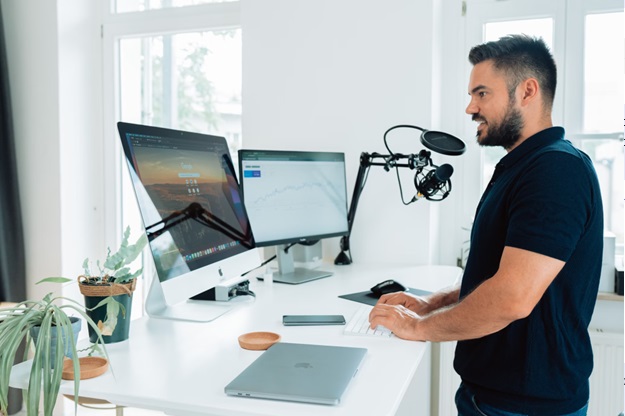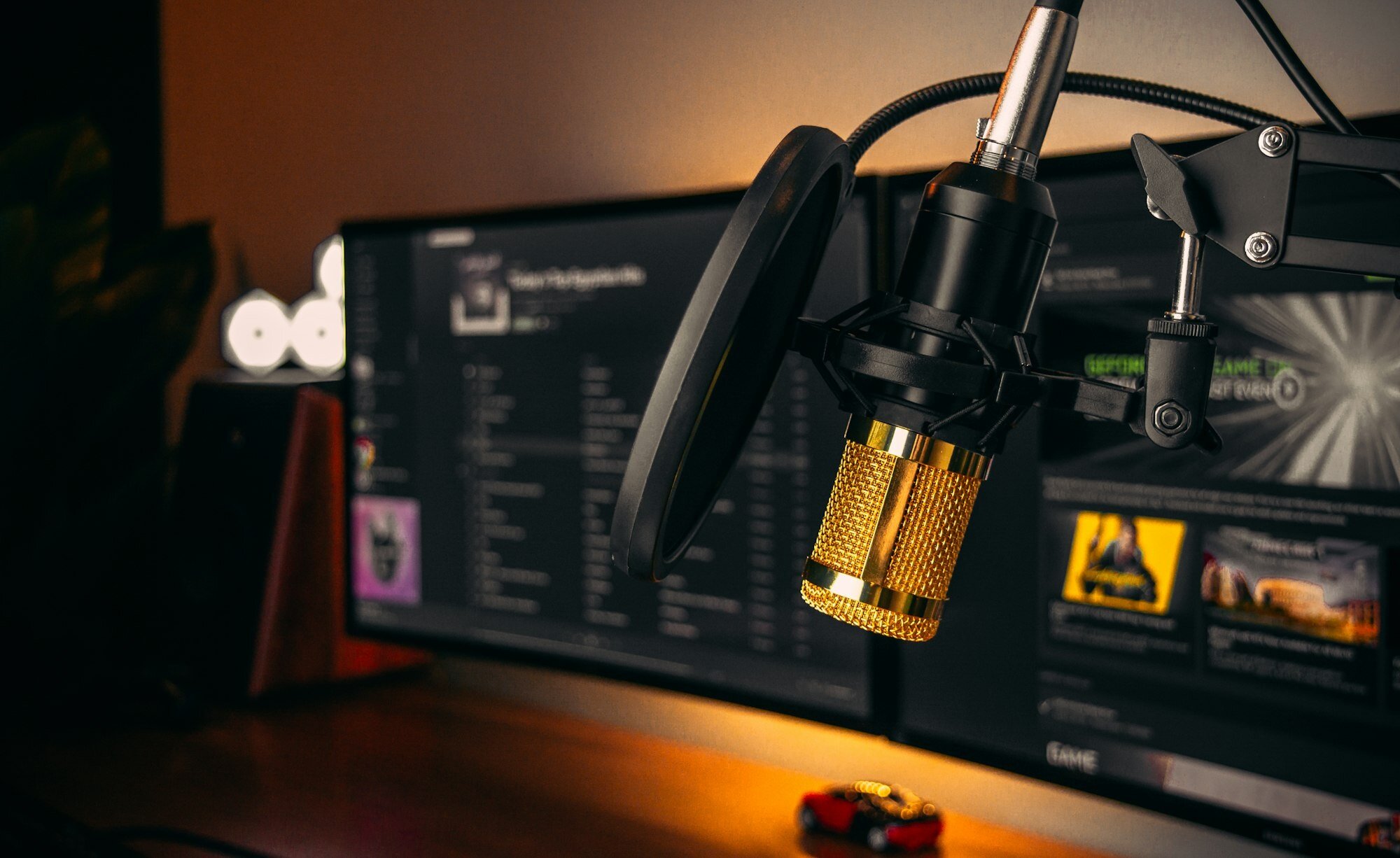In 2006, only 22% of the U.S. population was familiar with podcasting. Today, nearly 80% of U.S. adults report that they are aware of podcasting as a content medium, and the popularity of podcasting is only expected to grow in the years to come. With this in mind, it’s no wonder so many content creators have opted to dip a toe into the world of podcast production.
Podcasts aren’t just entertaining – they can be informative and educational and serve as a valuable tool for creators and marketers across nearly every industry. With the right approach, even newcomers to the podcasting field can grow their audience and make an impact with their audio content. In this comprehensive guide, we will discuss how creators can harness SEO best practices and audience-building techniques to develop engaging, accessible podcast content that stands out from the crowd.
Choosing Your Podcast Topic and Niche
First things first: When you’re first starting out on your podcast journey, you’ll need to decide what your show will focus on. Choosing your podcast topic and niche is one of the most critical steps of the development process because it will impact just about every other decision you make when trying to get your show off the ground.
It’s always best to choose a topic that you are familiar with or that carries some personal significance for you, but it’s also important to research current podcasting niches and trends to ensure that you aren’t setting out to create something that already exists. It’s best to settle on a topic that has a relatively narrow niche so you can carve out space for yourself as a leading voice on the subject. This means choosing a topic that has a highly specific, yet active target audience who will be eager to engage with new content within the niche.

Setting Up Your Podcast
Once you’ve decided what your show will be about, you have to figure out how you will create it. The easiest way to set up the technical infrastructure for your show is to utilize a podcast hosting platform like Buzzsprout or Libsyn. These platforms serve as a convenient digital space where podcasters can store and distribute their audio content. Once you have recorded and edited your first episode, you can easily upload the final edit to your podcasting platform of choice for distribution to major podcatchers like Spotify and Apple Podcasts.
Many podcasters also choose to develop a standalone website to help promote their content. A podcast website can be used to share important updates, promote upcoming episodes, sell merchandise, and more. Depending on your website setup, you may also be able to sync your podcast feed directly to your site so users can easily stream new episodes directly through your website.
With the right infrastructure in place for distributing and marketing your show, you can turn your attention to actually producing it. Now is the time to invest in any equipment you might need for the recording and editing processes. To record your first episode, you will need:
- A computer
- A microphone
- Audio recording software
- Headphones
- Pop filters/microphone screens
- Soundproofing treatments like acoustic panels or foam
After you have your recording setup squared away, it’s time to start creating!
Recording and Editing Your Podcast
Before you can start recording, you need to make some decisions about the format of your show. Some creators prefer a more freeform approach to podcasting while others like to spend time outlining and script-writing prior to recording for added professionalism. Whether or not you wind up scripting your content, it’s critical that you spend time researching your intended talking points to avoid making any significant errors that could negatively impact the public’s understanding or opinion of your show.
With a script, outline, or research notes in hand, you can now focus your attention on recording and editing. Carefully controlling the conditions in your recording environment can help to streamline the audio quality of your final recording and cut back on the amount of time you will ultimately have to spend editing or sound mixing. After recording the rough cut of your episode, you will want to carefully review and edit it to enhance the audio and eliminate any mistakes, background noises or superfluous, repetitive information.
During editing, you will also have the opportunity to add intro or outro music, input metadata, and produce transcripts of your work. Each of these elements can enhance the quality of your podcast and help you build a more comprehensive branding package. The more unique and polished your work is, the more likely audience members are to tune in to your show.

Optimizing Your Podcast for Discovery
The next major hurdle in the podcasting process is ensuring your podcast reaches its target audience. Search engine optimization or SEO is a major part of this equation. SEO refers to the process of making your online content more visible and attractive to search engines like Google. Taking certain steps to enhance your SEO can make your podcast appear more readily in search results so potential audience members are more likely to stumble upon your content.
To boost your SEO ranking, you’ll want to incorporate carefully researched SEO keywords into your podcast titles, descriptions, and metadata. SEO keywords are specific words or phrases that people commonly search for online. Selecting high-performing yet narrow keywords can help your content show up in your target audience’s search results and deliver more reliable conversions.
Transcription is another valuable tool for podcast creators looking to boost their SEO ranking. Transcription involves converting audio content to written text to make the information more accessible and inclusive of individuals with disabilities and specific learning needs. Some people need or prefer to consume content in a readable, and transcribing audio and video recordings can help to support these individuals.
Transcription also makes information more readily available to search engines whose discovery algorithms do not generally take into account any information contained in audio or video files. Since search engines are not able to crawl audio or video content, they can not use these files to determine a website’s search ranking. Posting podcast transcripts online can make the information more easily discoverable by search engines and subsequently enable a podcast’s webpage to appear higher in users’ search results.
Measuring Success and Growing Your Audience
Once your podcast is live, it’s important to stay in the know about your show’s performance. Many podcast hosting platforms have built-in analytics that allow you to review your downloads, shares, and other metrics all in one place. Some individual podcasting platforms and applications also offer users a breakdown of their performance metrics and may even allow individual listeners to leave immediate feedback for creators in the form of reviews.
Podcasters can also leverage the power of social media to help them build their audience and boost engagement. Responding to social media comments and reviews can help creators build community with their listeners and contribute to more rapid audience growth over time. Creators can also promote new episodes on their social media pages or seek out opportunities for guest posting on established popular profiles.

Monetizing Your Podcast
If revenue generation is one of your long-term podcasting goals, there are a few different ways you can monetize your content. Some podcasters enter into advertisement and sponsorship deals with companies looking for new promotion opportunities. This might look like a company paying you an agreed-upon sum for reading an on-air advertisement for a product or service they offer. Some companies will provide podcasters with unique discount codes their listeners can use to save money on a particular product, and the podcasters will receive a percentage of those sales.
Other podcasters employ a subscription or membership model to increase their revenue streams. A membership site like Patreon, for example, might ask members to pay a fee each month in exchange for bonus content, early access to new episodes, VIP tickets to live shows, and more. As podcasters continue to take advantage of these monetization options, they will be able to re-invest their profits to enhance the quality of their show and bolster their marketing efforts down the line.
Work with a Professional
In summary, podcasting is a remarkably versatile new medium that has revolutionized the way many of us engage with entertaining and educational content. If you’re interested in launching a podcast of your own, you can lay a solid foundation for your efforts by carefully researching, marketing, and optimizing your content for today’s audiences. With the right combination of resources and motivation, aspiring podcasters can find their niche and create a space for themselves in the ever-changing landscape of digital content.
VITAC specializes in developing assistive technology solutions that make online audio and video content more accessible and engaging for modern audiences. Our transcription approach delivers highly accurate final transcripts that content creators can use to expand their audience and boost their SEO ranking. If you’re interested in learning more about VITAC’s transcription process or if you’d like more information about how transcription can be used for search engine optimization, reach out today to speak to a member of our team.




